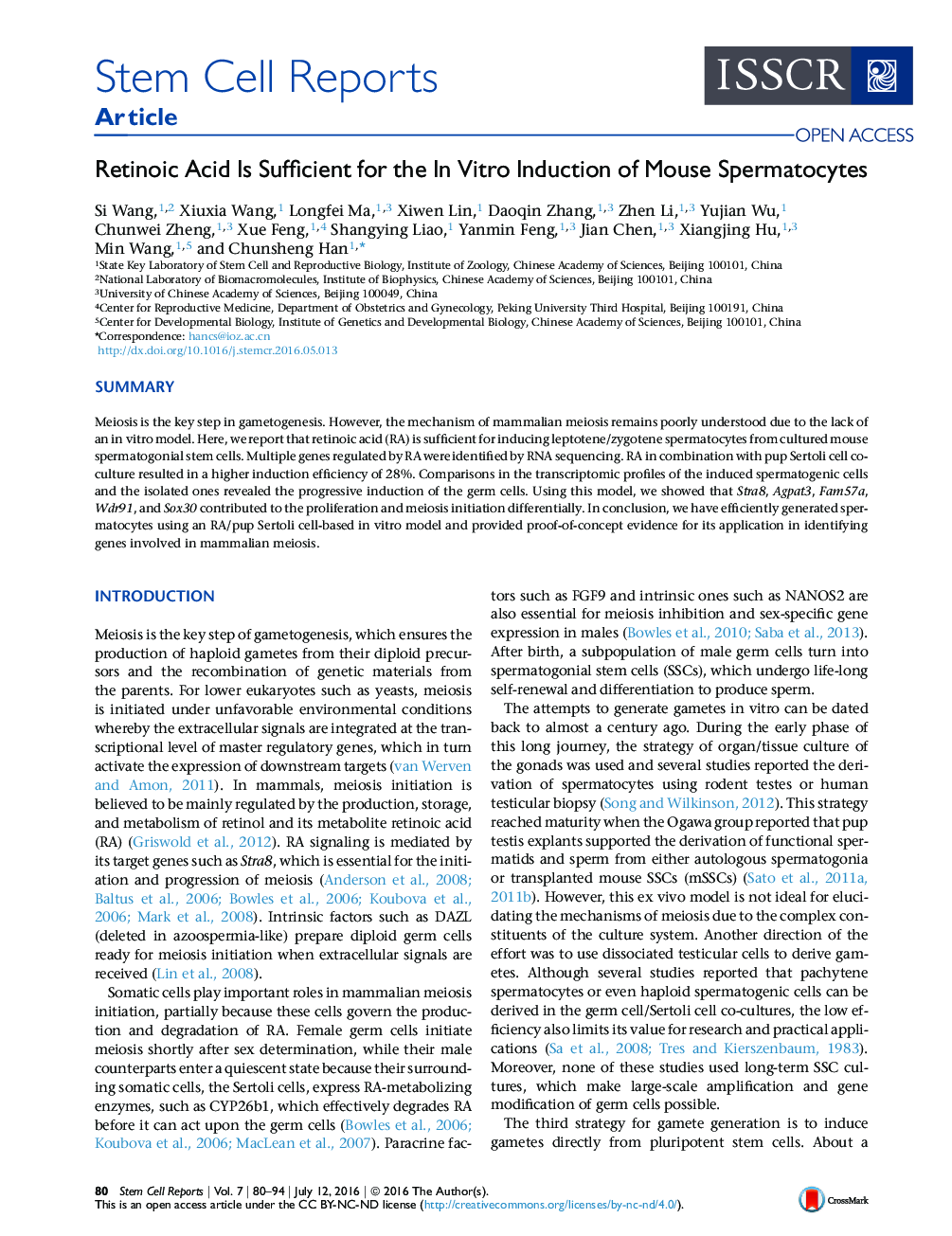| Article ID | Journal | Published Year | Pages | File Type |
|---|---|---|---|---|
| 2093244 | Stem Cell Reports | 2016 | 15 Pages |
•Retinoic acid (RA) is sufficient for the induction of spermatocytes•RA activates meiotic genes while repressing genes for SSC self-renewal•An in vitro model for meiosis based on RA and pup Sertoli cells is established•Genes for meiosis have been identified using the in vitro model
SummaryMeiosis is the key step in gametogenesis. However, the mechanism of mammalian meiosis remains poorly understood due to the lack of an in vitro model. Here, we report that retinoic acid (RA) is sufficient for inducing leptotene/zygotene spermatocytes from cultured mouse spermatogonial stem cells. Multiple genes regulated by RA were identified by RNA sequencing. RA in combination with pup Sertoli cell co-culture resulted in a higher induction efficiency of 28%. Comparisons in the transcriptomic profiles of the induced spermatogenic cells and the isolated ones revealed the progressive induction of the germ cells. Using this model, we showed that Stra8, Agpat3, Fam57a, Wdr91, and Sox30 contributed to the proliferation and meiosis initiation differentially. In conclusion, we have efficiently generated spermatocytes using an RA/pup Sertoli cell-based in vitro model and provided proof-of-concept evidence for its application in identifying genes involved in mammalian meiosis.
Graphical AbstractFigure optionsDownload full-size imageDownload as PowerPoint slide
